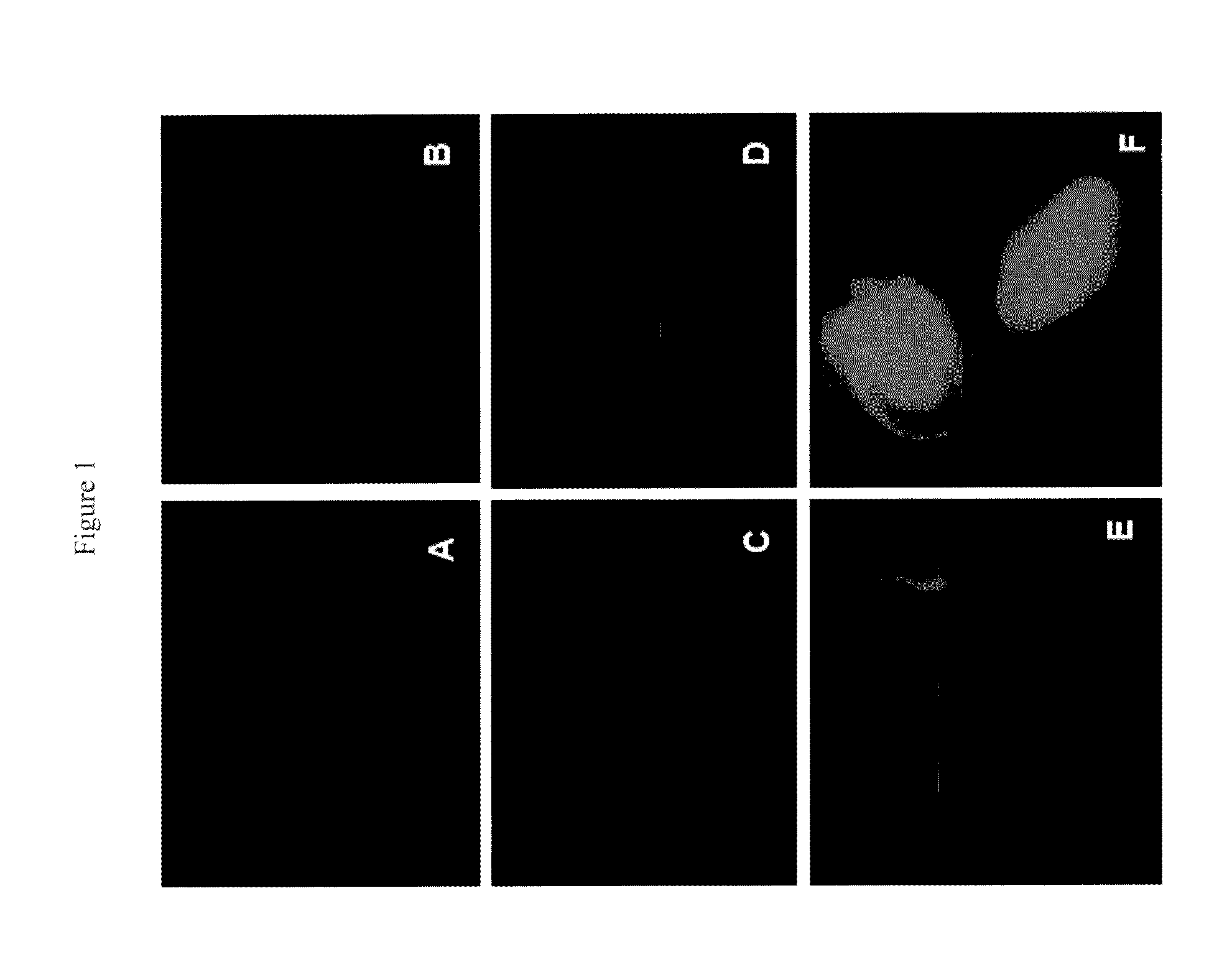Nanocarrier based plant transfection and transduction
a cellpenetrating peptide and plant technology, applied in the field of nanocarrier based plant transfection and transduction, can solve the problems of inability to disclose the transformation of plant cells, time-consuming and unpredictable traditional plant breeding strategies to develop new lines of plants that exhibit particular traits, and limited use of cpp in plant cells for transfection studies, so as to facilitate internalization of complexes
- Summary
- Abstract
- Description
- Claims
- Application Information
AI Technical Summary
Benefits of technology
Problems solved by technology
Method used
Image
Examples
example 1
Mature Embryos
[0066]The mature embryos (T. aestivum cv AC Superb) were isolated and surface sterilized as described by Mahalakshmi et al (2000). The sterilized embryos were air dried in the laminar hood for 1 h prior to use.
Immature Embryos
[0067]The embryos were isolated from spikes two weeks post-anthesis (scutellum diameter 1-2 mm). The immature seeds were surface sterilized with 70% ethanol for 30 s followed by treatment with 10% hypochlorite (Chlorex) and a drop of Tween 20, 3 min. Four washings of 1 min each were given with sterile water. The embryos were hand dissected under sterile conditions. Isolated embryos were placed on GEM medium (Eudes et al, 2003) for 24 h in dark at room temperature prior to CPP translocation studies.
[0068]Isolated microspores were prepared as described by Amundsen and Eudes, 2005.
example 2
Translocation of Fluoresceinated Cell Penetrating Peptides in Zygotic Embryos Using Cellular Permeabilizing Agents
[0069]Peptides were custom synthesized and fluoresceinated at the N-terminal amino group (Alberta Peptide Institute, Canada) (Table 1). FITC-Dextran sulphate (4,000 kDa, Sigma Aldrich) and mutated Tat were used as a negative control.
[0070]Isolated and sterilized embryos (20-25) were imbibed in total volume of 420 μl permeabilization buffer (15 mM sodium chloride, 1.5 mM sodium citrate, pH 7.1) containing cellular permeabilization agent toluene / ethanol (1:4) in 1:20 ratio with permeabilization buffer. To this 2.1 μl of 1 mM fluoresceinated CPP was added to give a final concentration of 5 μM. In negative controls, the embryos were treated with FITC-dextran sulphate or M-Tat. The embryos were incubated in the permeabilization mix for 1 h in dark at room temperature, followed by two washings with permeabilization buffer. The embryos were then treated with trypsin:EDTA (0.25%...
example 3
CPP-Plasmid DNA Complex Uptake by Permeabilized Immature Embryos
[0075]For CPP-DNA complex studies, non-fluoresceinated TAT-PTD was employed for making the complex with DNA (pAct-1 GUS). Plasmid DNA and TAT-PTD were mixed together in 1:10 ratio (5 μg DNA:50 μg TAT-PTD, stocks for both were prepared in optima water) with total volume made up to 100 μl with permeabilization buffer. The mix was incubated at room temperature for 1 h prior to addition to the embryos imbibed in permeabilization buffer. The permeabilizing agent (Toluene) in 1:20 ratio with the buffer was added just before adding the complex to the embryos. The embryos were incubated with the TAT-PTD and DNA complex in the presence of permeabilizing agent for 1 h, followed by two washings with permeabilization buffer. The embryos were plated on GEM containing 250 μg / ml cefotaxime at 25° C. in dark for three days.
GUS Histochemical Assay
[0076]The immature embryos were incubated in GUS histochemical buffer (Jefferson, 1987) at ...
PUM
| Property | Measurement | Unit |
|---|---|---|
| pH | aaaaa | aaaaa |
| total volume | aaaaa | aaaaa |
| total volume | aaaaa | aaaaa |
Abstract
Description
Claims
Application Information
 Login to View More
Login to View More - R&D
- Intellectual Property
- Life Sciences
- Materials
- Tech Scout
- Unparalleled Data Quality
- Higher Quality Content
- 60% Fewer Hallucinations
Browse by: Latest US Patents, China's latest patents, Technical Efficacy Thesaurus, Application Domain, Technology Topic, Popular Technical Reports.
© 2025 PatSnap. All rights reserved.Legal|Privacy policy|Modern Slavery Act Transparency Statement|Sitemap|About US| Contact US: help@patsnap.com



